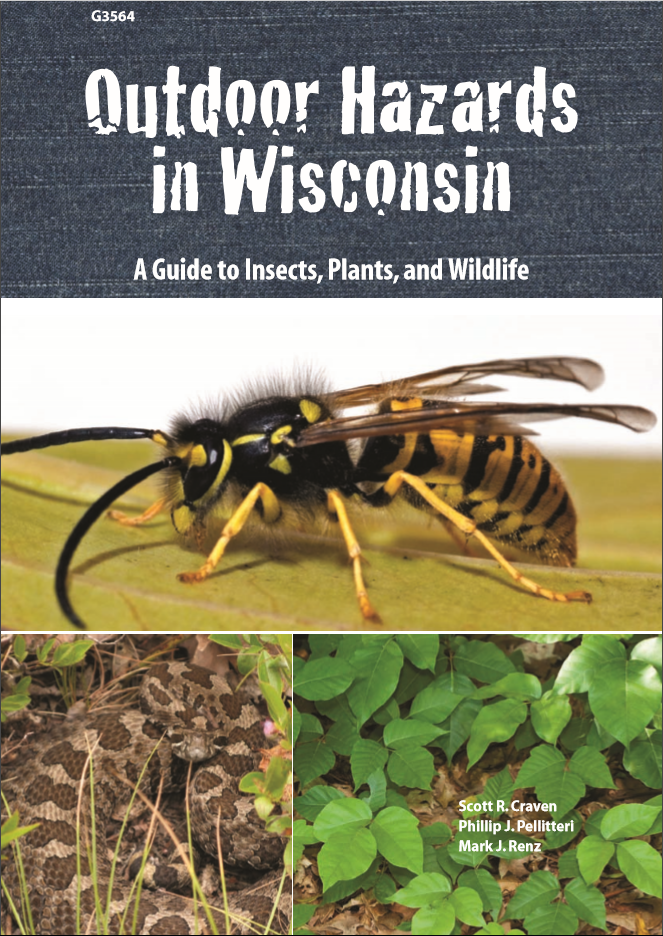 Have you ever walked through a patch of poison ivy or brushed up against wild parsnip? If so, you probably learned an uncomfortable lesson about encountering harmful plants. Luckily, there is a less painful way to learn about dangerous vegetation hidden among Wisconsin’s natural beauty. Now is the time to brush up on hazards you may encounter while working or recreating outdoors.
Have you ever walked through a patch of poison ivy or brushed up against wild parsnip? If so, you probably learned an uncomfortable lesson about encountering harmful plants. Luckily, there is a less painful way to learn about dangerous vegetation hidden among Wisconsin’s natural beauty. Now is the time to brush up on hazards you may encounter while working or recreating outdoors.
Outdoor Hazards in Wisconsin, a guide published by the University of Wisconsin-Madison Division of Extension, will help you recognize, avoid and handle potential problems caused by wildlife, insects and plants.
Contents include:
- Amphibians (salamanders, toads)
- Reptiles (turtles, snakes)
- Birds (defending territory, handling birds)
- Mammals (short-tailed shrews, bats, skunks, porcupines, coyotes, gray wolves, deer, black bears)
- Stinging insects (bees and wasps)
- Blood-feeding insects (mosquitoes, deerflies and horseflies, blackflies, biting midges, ticks, chiggers)
- Plants that are poisonous when ingested (poison hemlock, spotted water hemlock, bittersweet nightshade, black nightshade, jimsonweed)
- Plants that are poisonous on contact (poison ivy, poison sumac, wild parsnip, stinging nettle)
- Plants that cause hay fever (common ragweed, giant ragweed)
- Thorny, barbed plants (bull thistle, beggarticks, burdock, cocklebur, sandbur)
(Visited 276 times, 1 visits today)
